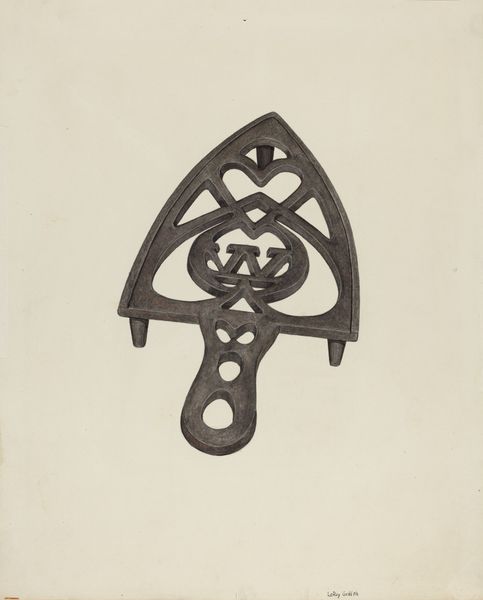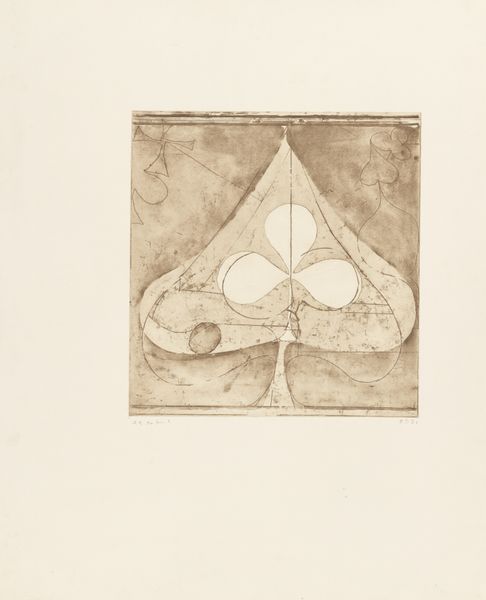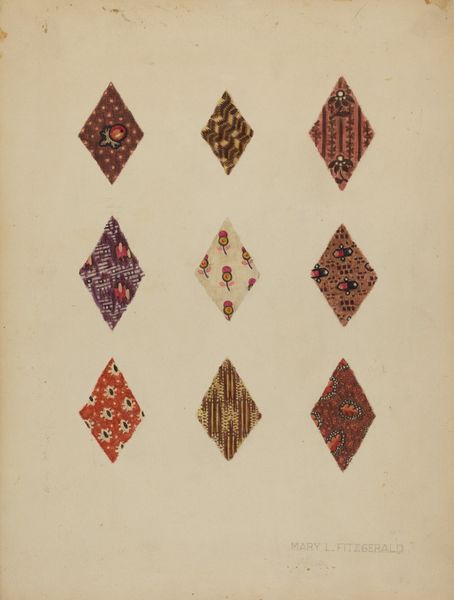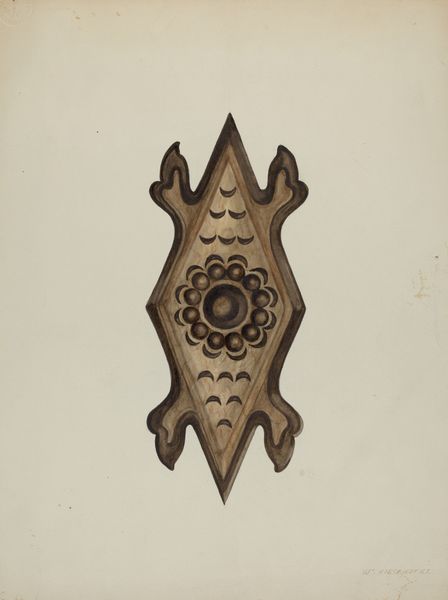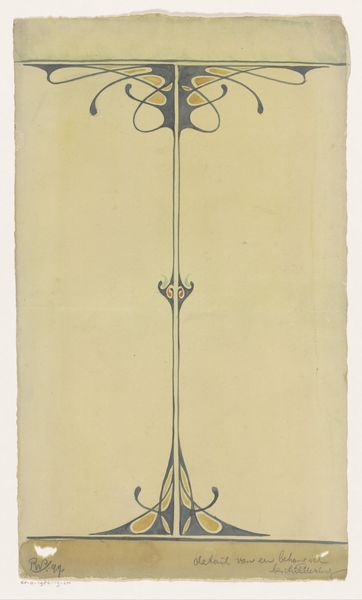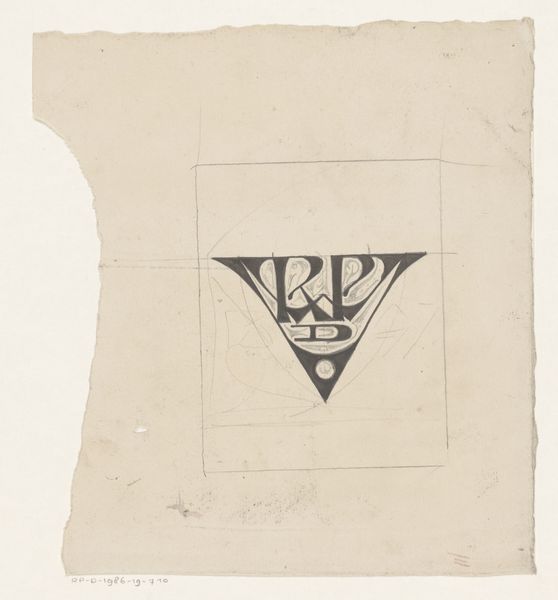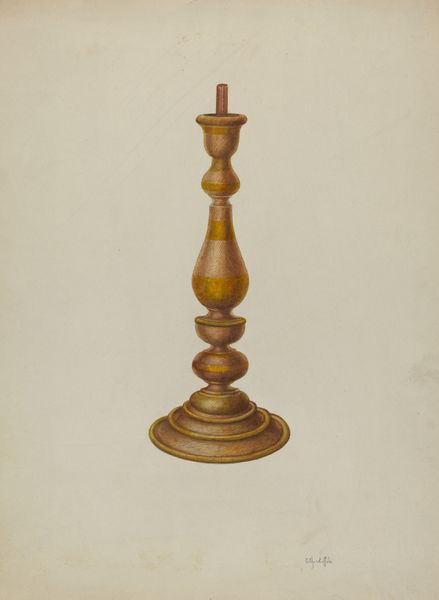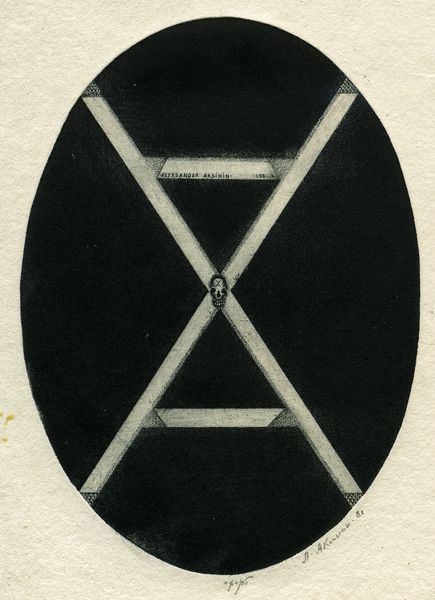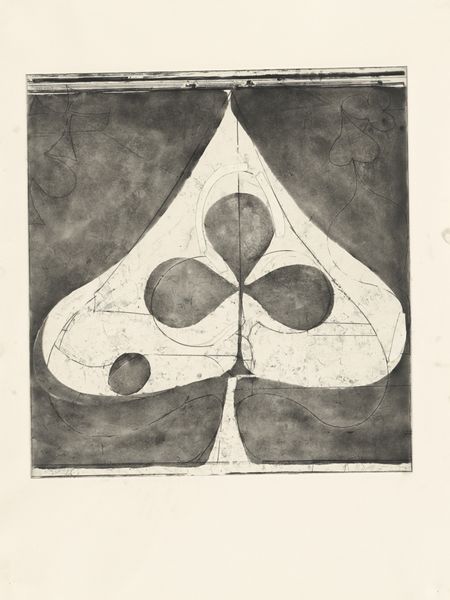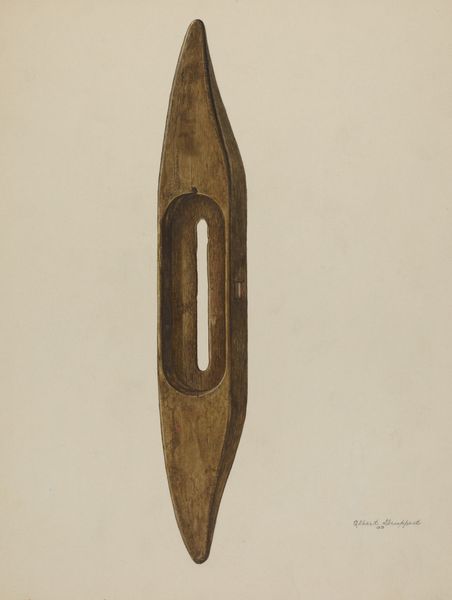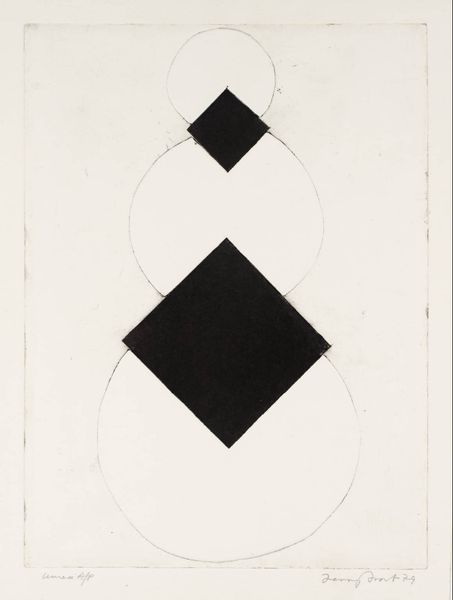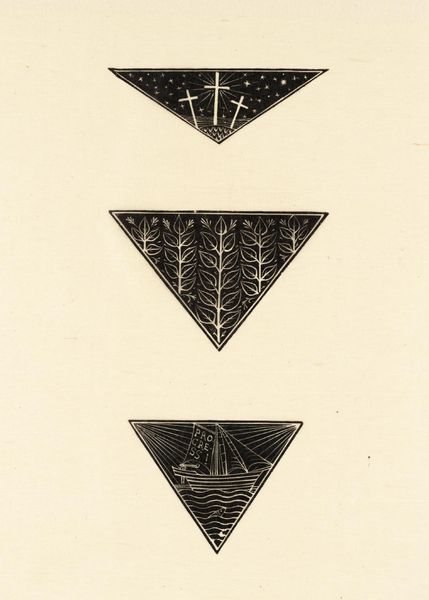
drawing, pencil, graphite
#
pencil drawn
#
drawing
#
toned paper
#
pencil sketch
#
pencil drawing
#
geometric
#
pencil
#
graphite
#
realism
Dimensions: overall: 38 x 26.1 cm (14 15/16 x 10 1/4 in.) Original IAD Object: 10 1/8" high; 3" wide
Copyright: National Gallery of Art: CC0 1.0
Curator: Standing before us is "Door Handle", a graphite drawing rendered on toned paper, completed sometime between 1935 and 1942 by Richard Barnett. What's your initial take? Editor: It’s stark, in a strangely comforting way. The symmetry soothes. Is it meant to be functional, or is Barnett playing with the idea of function? Curator: It's a study of the mundane elevated by the precision of its depiction. Notice how the graphite gives a cool, almost metallic feel. The geometric shapes are very intentional. Triangles anchoring a cylindrical handle. Barnett is stripping down the idea of "door." Editor: Those triangles though! They read like arrows. In iconography, arrows often signify direction, purpose, even aggression. Here, pointing both ways... ambivalence, perhaps? An invitation to enter and exit? Curator: Or maybe a reminder that every entrance also implies a potential exit? He emphasizes the dual nature of transitions. Plus, the handle itself seems almost worn, doesn’t it? Signs of countless hands… Editor: Yes, and the choice of rendering in graphite emphasizes a kind of pre-industrial, artisanal feel, even if door handles were already being mass-produced by then. There's an echo of handcraftedness here, making it more than just a utilitarian object. It becomes a relic. Curator: A relic mediating our passage. We’re invited to grasp, to hold, and to move through. There is some subtle symbolism also in the usage of metal, its solidity promising security and stability. Barnett captured more than just a door handle; he has given us a key to unlock meaning and transition. Editor: I find myself drawn back to that toned paper. It softens the metallic feel, introducing a nostalgic warmth. Like a memory. Perhaps the door handle represents not just physical space but also a transition in time? A poignant consideration given when this drawing was produced. Curator: Ultimately, Barnett makes us reconsider the objects we often overlook. He asks us what doors we want to open and which we might choose to close. I'd say this graphite study really provides more insight and nuance than most would imagine from a simple household fitting. Editor: Yes, a quiet testament to the power of observation. Everyday objects often conceal remarkable depths.
Comments
No comments
Be the first to comment and join the conversation on the ultimate creative platform.


